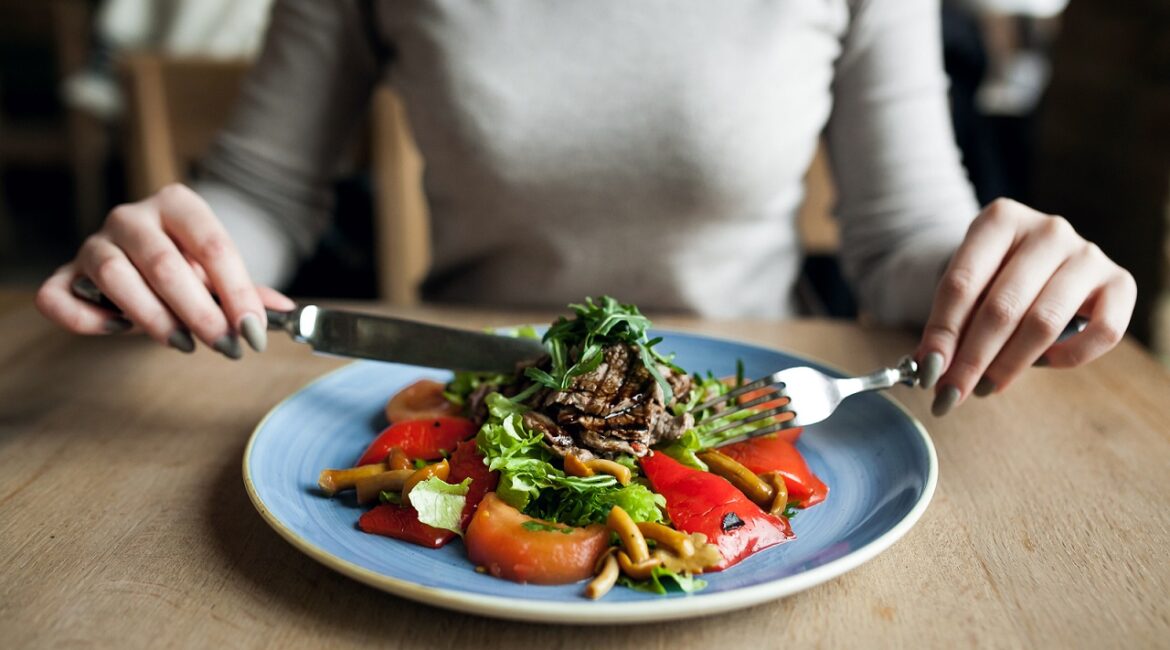Here we will see:
ToggleWhat to eat and what to avoid in an anti-inflammatory diet?
In the pursuit of optimal health, dietary choices play a key role. A dietary approach that gains significant strength is the anti-inflammatory diet, recognized for its potential to mitigate chronic inflammation, a precursor to various health problems. But, what to eat and what to avoid in an anti-inflammatory diet?
In this extensive guide, we will delve into the scientific foundations of the anti-inflammatory diet, provide an exhaustive list of anti-inflammatory foods, explore prohibited culprits, and offer a variety of inflammatory anti-menus to helpyou to perfectly incorporate this nutritional strategy into your lifestyle.
Scientific Basis of the anti-inflammatory diet
Understanding the scientific basis behind the anti-inflammatory diet is fundamental to appreciating its impact on our health. Chronic inflammation, an immune response gone awry, is increasingly linked to the development of conditions such as cardiovascular diseases, diabetes, and certain cancers. Scientific research has elucidated that dietary choices can modulate the inflammatory response.

Foods Indicated in the anti-inflammatory diet:
Omega-3 Fatty Acids: Fatty fish, a cornerstone of the anti-inflammatory diet, is abundant in omega-3 fatty acids. These essential fats, including eicosapentaenoic acid (EPA) and docosahexaenoic acid (DHA), possess potent anti-inflammatory properties. Salmon, mackerel, and trout stand out as stellar sources.
Colorful Antioxidant-Rich Fruits and Vegetables: Berries, with their vibrant hues, are replete with antioxidants such as anthocyanins and quercetin. Blueberries, strawberries, and raspberries, alongside leafy greens, bell peppers, and tomatoes, constitute a colorful arsenal against inflammation.
Nuts and Seeds: Almonds, walnuts, chia seeds, and flaxseeds are treasure troves of alpha-linolenic acid, a plant-based omega-3 fatty acid. Additionally, they offer a blend of vitamins, minerals, and antioxidants, further contributing to the anti-inflammatory profile.
Olive Oil’s Elixir: Extra virgin olive oil, a cornerstone of the Mediterranean diet, is a rich source of monounsaturated fats, particularly oleic acid. Renowned for its anti-inflammatory and antioxidant attributes, it adds both flavor and health benefits to your culinary endeavors.
Turmeric’s Golden Touch: Turmeric, a spice integral to many cuisines, owes its anti-inflammatory prowess to curcumin. This bioactive compound has been extensively studied for its potential in managing inflammation and oxidative stress, making it a valuable addition to the anti-inflammatory diet.

Prohibited Foods in the Anti-Inflammatory Diet:
Equally crucial is understanding what to avoid in the anti-inflammatory journey to attain optimal health.
Processed Foods and Trans Fats:
Fast food, packaged snacks, and items laden with trans fats are notorious for promoting inflammation. Steering clear of these processed culprits is pivotal in embracing an anti-inflammatory lifestyle.
Refined Sugars and High-Glycemic Foods: Soda, candies, and foods with high sugar content not only contribute to weight gain but also fuel inflammation. Opting for natural sweeteners and whole foods is a wise choice to curb inflammatory responses.
Processed Red Meat and Additives: Bacon, sausages, and other processed meats often contain additives and preservatives that may trigger inflammation. Choosing lean, unprocessed meats or plant-based alternatives fosters an anti-inflammatory environment.
Refined Vegetable Oils: Oils such as corn, soybean, and sunflower oil, high in omega-6 fatty acids, can tip the inflammatory balance when consumed in excess. Opting for alternatives like olive oil or avocado oil promotes a healthier fat profile.
Gluten-Containing Grains: While gluten sensitivity varies among individuals, some may experience inflammatory responses to gluten-containing grains like wheat, barley, and rye. Exploring gluten-free alternatives can be a strategic move for those aiming for an anti-inflammatory diet.
Expanding the Anti-Inflammatory Toolkit:
In addition to the foundational anti-inflammatory foods mentioned, let’s explore more items to diversify your anti-inflammatory toolkit.
Garlic’s Immune Boost: Garlic, revered for its culinary allure, also boasts allicin, a compound known for its immune-boosting and anti-inflammatory properties. Incorporating fresh garlic into your dishes not only enhances flavor but also contributes to your anti-inflammatory endeavors.
Green Tea’s Polyphenol Power: Green tea, rich in catechins, particularly epigallocatechin gallate (EGCG), exhibits potent anti-inflammatory effects. Regular consumption not only hydrates but also provides a refreshing way to combat inflammation.
Dark Chocolate’s Bittersweet Benefits: High-quality dark chocolate, with a cocoa content of at least 70%, contains flavonoids with anti-inflammatory properties. Enjoying a small serving can satiate sweet cravings while contributing to your anti-inflammatory goals.
Ginger’s Zesty Zing: Gingerol, the bioactive compound in ginger, has demonstrated anti-inflammatory and antioxidant effects. Whether added to teas, stir-fries, or smoothies, ginger provides a zesty touch with anti-inflammatory benefits.
Probiotics for Gut Health: Fermented foods like yogurt, kefir, and sauerkraut introduce beneficial probiotics to your gut. A healthy gut microbiome is intricately linked to immune function and inflammation regulation.

Tips for Anti-Inflammatory Menus:
Breakfast (Choose two options: ):
- Berry and spinach smoothie.
- Oatmeal with nuts and fruits.
- Green tea or turmeric tea.
- Golden Milk Latte: Warm milk (dairy or plant-based) infused with turmeric, ginger, and a hint of cinnamon.
- A small serving of Greek yogurt with a drizzle of honey.
- A handful of mixed berries to satisfy your sweet tooth.
Additional Breakfast Option:
- Quinoa Breakfast Bowl:
Cooked quinoa topped with mixed berries, sliced almonds, and a drizzle of honey.
Greek yogurt on the side, sprinkled with chia seeds.
A cup of green tea or turmeric-infused warm water.
Diverse Lunch Menu:
- Grilled Chicken Salad:
Grilled chicken breast over a bed of mixed greens (spinach, arugula, and kale).
Sliced avocado, cherry tomatoes, and walnuts for added flavor and nutrients.
Dressing made with extra virgin olive oil, balsamic vinegar, and a hint of Dijon mustard.
Quinoa or brown rice on the side for a wholesome touch. - Grilled salmon with quinoa.
Colorful salad with various vegetables.
Olive oil as a dressing.
Afternoon Snack Variety:
- Antioxidant-Packed Smoothie:
Blend together blueberries, spinach, banana, chia seeds, and a splash of almond milk.
Handful of mixed nuts (walnuts, almonds, and pistachios).
A small serving of dark chocolate for a delightful treat. - Mixed nuts and dried fruits.
Natural yogurt with honey.
Dinner:
- Baked Salmon with Turmeric:
Salmon fillets seasoned with turmeric, garlic, and lemon, baked to perfection.
Roasted sweet potatoes and steamed broccoli as side dishes.
Quinoa pilaf with mixed herbs for a flavorful twist. - Roasted chicken with vegetables.
Steamed broccoli.
Sweet potatoes.
Final thoughts on the anti-inflammatory diet:
The anti-inflammatory diet offers a balanced nutritional approach focused on reducing chronic inflammation associated with various diseases. It is essential to remember that each person is unique, and adapting the diet to individual needs is crucial. Consulting a healthcare professional or nutritionist before making significant changes to the diet is always recommended.
Now that you know what to eat and what to avoid on an anti-inflammatory diet, by making conscious food choices, you can promote long-term health, reduce inflammation and contribute to a healthier, more balanced lifestyle.
Perhaps you might be interested:
Gluten-free diet: for who and what are the benefits?
Ketogenic Diet – how it works: Origins, Science, and Benefits

